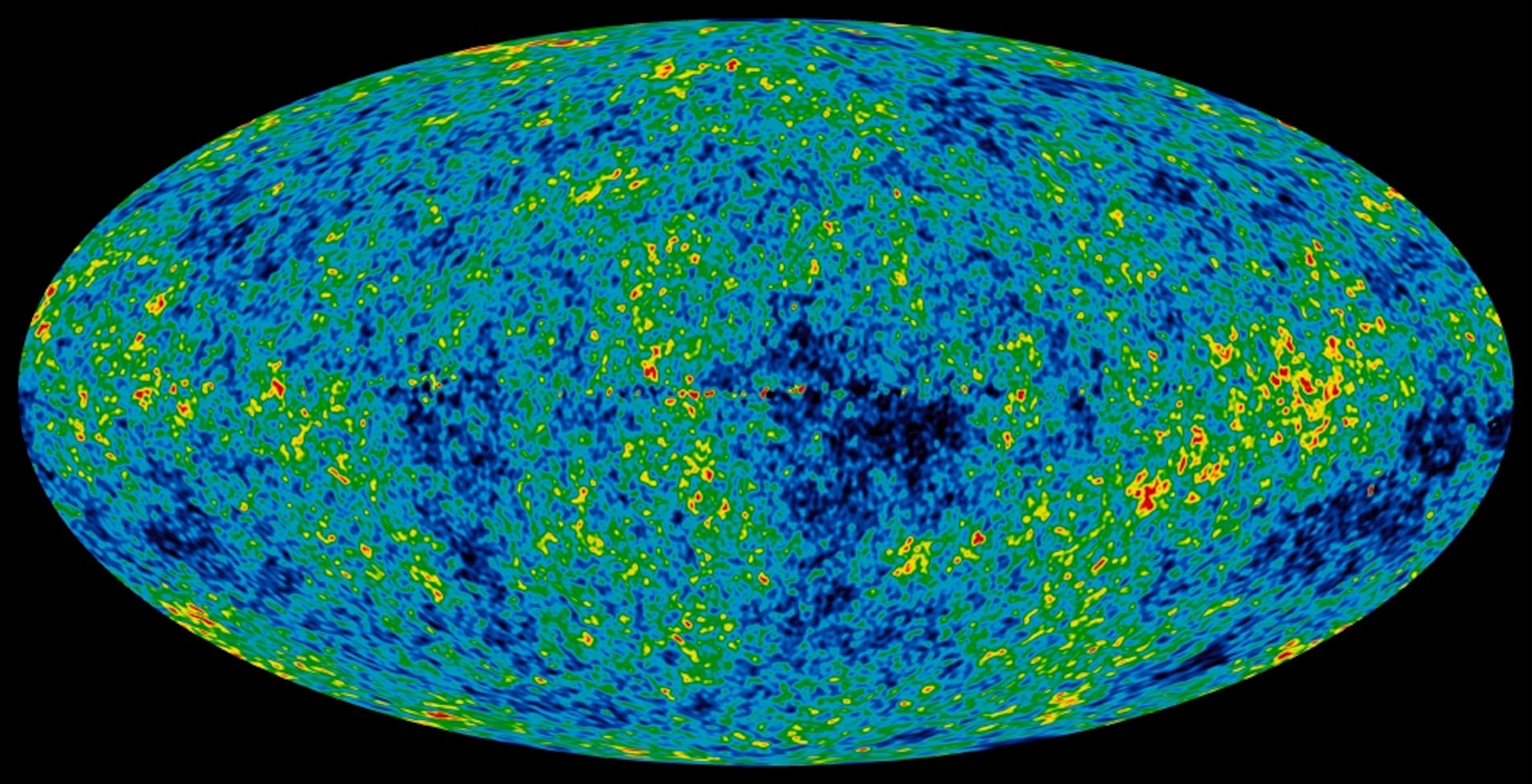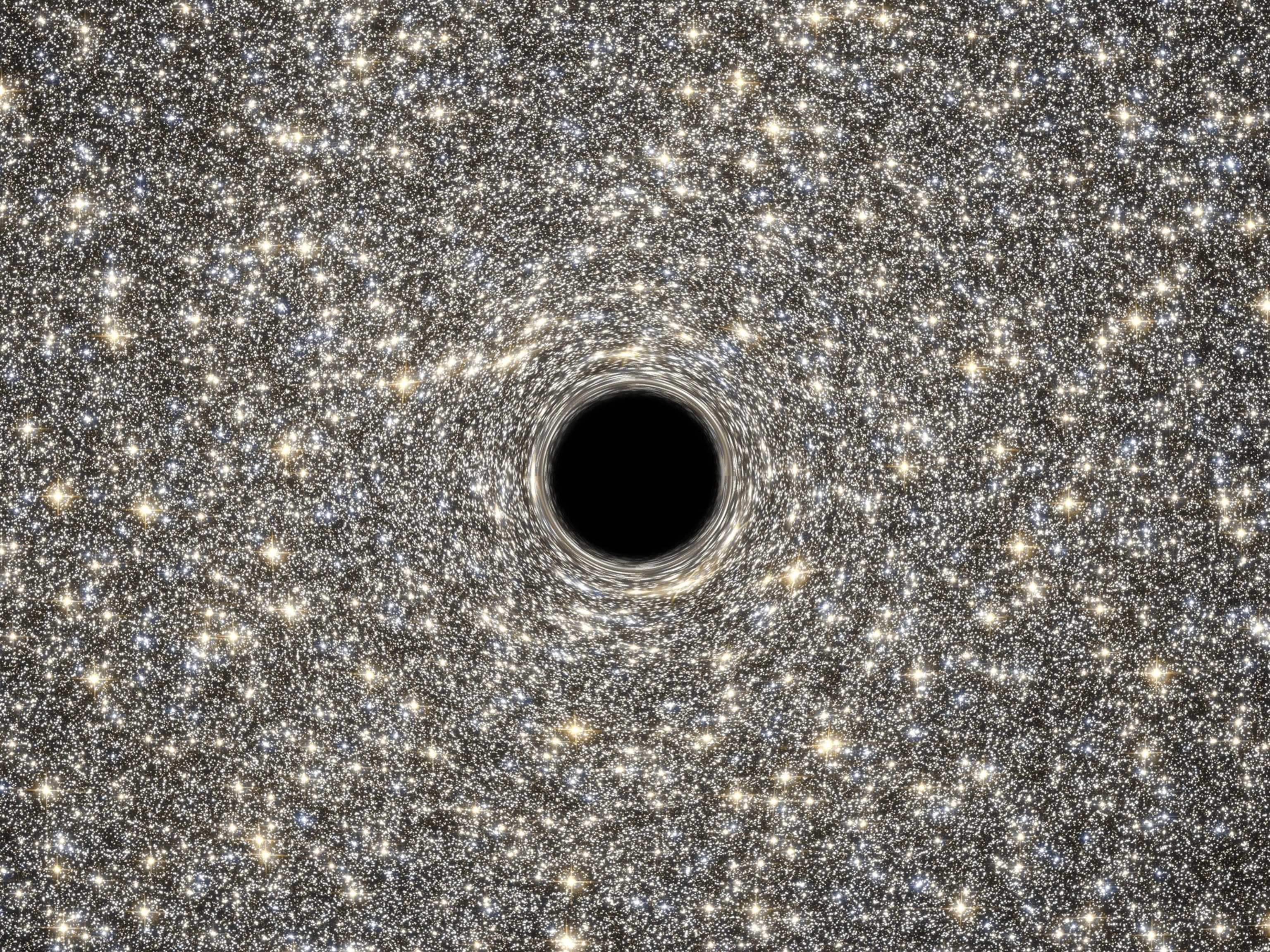
Other Universes Finally Detectable?
New method might uncover "bruises" from run-ins with other universes.
Big as it is, our universe may be just one of many, all floating in a nearly unfathomable "multiverse," scientists say. Problem is, there's been no way to test the idea.
Now, though, physicists say they've devised a way to detect "bruises" from our cosmos's purported collisions with other universes.
The international team has created a new computer algorithm to hunt for such irregularities in our universe, which they say would be disk-shaped—think of the temporary, circular flattening that happens when one beach ball bumps into another.
(Related: " Space Circles Are Proof of a Pre-Big Bang Universe?")
Because the multiverse would likely have expanded so fast that its universes would have been pulled far apart shortly after their creation, collisions would likely have occurred only during our universe's infancy.
Luckily, modern telescopes are able to study a sort of faint baby picture of the universe: the cosmic microwave background. The CMB is radiation emitted by the hot plasma that dominated the universe up until about 380,000 years after the big bang, which is thought to have occurred more than 13 billion years ago.
"For quite awhile, people have suspected there might be other bubble universes. But they thought this was completely untestable," said theoretical physicist Matthew Johnson of the Perimeter Institute.
"We now have a way to look for signals predicted by the theory. That we're able to test these ideas, period, is huge"—and due largely to the development of the new software and improved mapping of the CMB, said Johnson, a co-author of two recent studies describing the new algorithm to be published in future issues of the journals Physical Review Letters and Physical Review D.
(Related: "Universe Reborn Endlessly in New Model of the Cosmos.")
Cosmic Dents or Random Patterns?
The multiverse, if it exists, may have sprung out of a chaotic fluctuation of empty space.
Several "bubble" universes similar to our own, but perhaps with slightly different physical laws, would have appeared at about the same time and bumped against each other before diffusing across the multiverse.
The new algorithm offers a systematic, statistics-backed way to search for subtle evidence of these possible crashes in the mostly smooth pattern of the CMB—something that may be impossible for humans alone.
While people are good at seeing hard-to-detect patterns, we're also prone to seeing things that aren't what they appear to be—a face on Mars, for example.
"People tend to recognize patterns whether or not they are there. With something like the CMB that's very faint and very subtle, you need to know if [an anomaly] happened randomly or requires something extra" to have caused it, said cosmologist Sean Carroll of Caltech, who wasn't involved in the study.
"This team doesn't want to be fooled into thinking a pattern is more than just random noise."
(Also see "Every Black Hole Contains Another Universe?")
Promising Results
The algorithm has, so far, found 15 interesting features. Four of these looked especially promising, but statistical analyses suggest chance is the best explanation for the features, according to co-author Johnson.
It may just be that current maps of the CMB are simply not sharp enough to catch the presumably slight shifts that would indicate an inter-universal hit and run.
With that in mind, Johnson and his collaborators are anxiously awaiting new data from the Planck space telescope, which is recording the CMB in a resolution three times better than the most recent CMB map, created using the orbiting Wilkinson Microwave Anisotropy Probe (WMAP).
Planck's data collection is slated to finish later this year, but it will take until January 2013 to clean it up, expunging distortions caused by interference from celestial bodies closer to us in time and space than the CMB.
(Related: "New Proof Unknown 'Structures' Tug at Our Universe.")
Big, Earth-Shattering Discovery?
Even with better data from Planck, finding evidence of a universe-to-universe smashup is a game of chance, thanks to the nearly infinite possible outcomes.
A collision might destroy a universe before anyone could observe evidence of the collision or be too gentle to leave detectable evidence behind. There may even be multiple collisions that obscure evidence of one another.
If major collisions happened and are detectable, however, they will have left behind something—a cooler temperature, a warmer one, irregularities in the density of matter, or some other significant disturbance.
(See pictures of odd rings and spirals in space.)
Johnson and his colleagues are keeping the algorithm generic to find any meaningful differences at all in Planck's cleaned-up data.
"It's a long shot. But it would be such a big, earthshattering discovery that it's worth the effort," Caltech's Carroll said.
"If these guys discover the multiverse, it will forever change how we view our own universe."
More: See the ten biggest cosmic mindblowers of 2010 as chosen by National Geographic News editors >>





